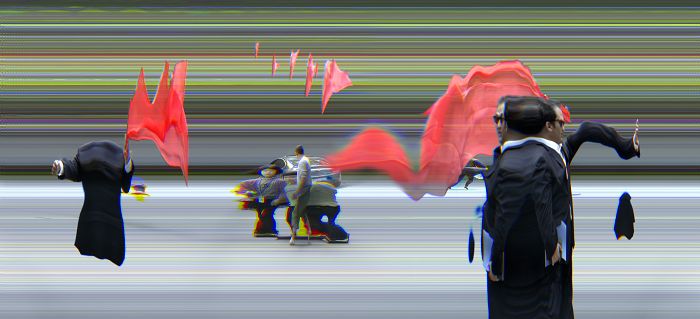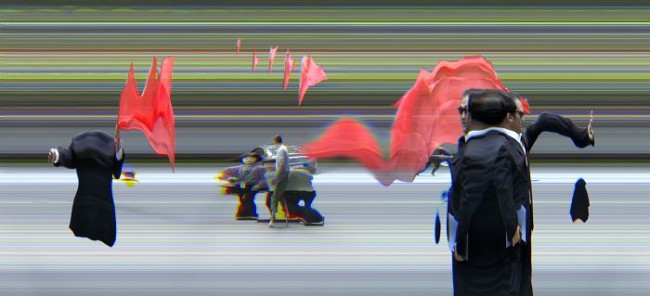This is the second in a series about photography techniques that can provide artistic distortions.
Slitscan photography and videography. Artists are already at work in it. Here is Slitscan Carnival by Carl Rosendahl with music by Ergo Phizmiz
[youtube]https://www.youtube.com/watch?v=LC96bYsHCbc[/youtube]
Those roller-coasters!
Rosendahl’s slitscreening doesn’t happen in-camera. He took the video at a carnival, then wrote post-processing software to create the slitscan effect. What started with cameras and film has emerged as parallel digital technologies. Post-processing, Rosendahl’s and other software, and also now two iPhone apps that take the doing back inside the camera. (Topic of the next blogpost.)
___________________________
Relativity, slitscan photograph by Ansen Seale via his website
Ansen Seale takes the art of slitscans seriously. This is what you long to see — someone who understands the technology but cares about the image. I love in Relativity (above) how the movements of one bather mass together at the lower right while everyone else is a cipher. Look how skillful is his Red Flag (below) taken in China. He’s got the flags, minimized the personalities.
Red Flag, slitscan photograph by Ansen Seale via his website
Distortions have been part of modern art for over a century. Manual artists can create a three-elbowed arm on a figure. Maybe it ends up being a good painting, maybe not. Likewise photographic and digital technologies offer their devotees manipulations. Sometimes the images are splendid art, sometimes they’re technically apt but aesthetically the equivalent of paintings by talented gorillas.
Art is judged by artfulness.



